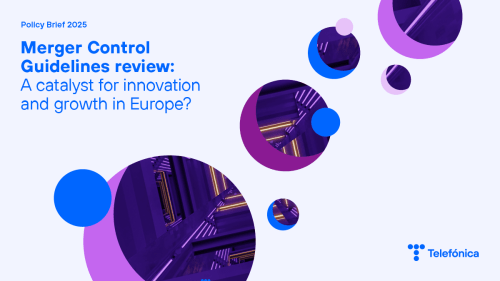What does the concept of ‘premium mode’ refer to?
When we talk about premium mode in 5G, we are referring to a type of communication that features intelligent traffic management, greater reliability and an advanced user experience. This means that, even at times of high mobile network congestion, that customer’s traffic would not be affected in the same way as others who do not have premium mode. It is a differentiated service, designed for companies and sectors that need a connection with an extra level of reliability and resilience.
And what role does 5G play in all this?
5G Stand Alone is the technology that makes this functionality possible. Thanks to Network Slicing, we can ‘configure reserved lanes’ on the network for critical users, services or applications. That is why we say that the premium mode is, in a way, a child of 5G: only with this generation of network can we ensure a unique connectivity experience.
What are the features of this premium mode linked to 5G?
I would say there are three main features:
- A consistent and predictable connectivity experience, even during peak network saturation.
- Enhanced stability, thanks to redundant infrastructures that ensure robustness and reliability.
- Customisation, as each company can contract mobile connectivity tailored to its needs, from video conferencing to telemedicine or logistics management.
How is 5G helping in critical situations?
We’re already seeing it in practice. In Extremadura’s 112 emergency service, network slicing gives firefighters, healthcare workers and security forces priority connectivity, even when the public network is overloaded. The same thing happens in exceptional circumstances like a DANA, a fire or a power cut. In such cases, having robust infrastructure with 5G Stand Alone and high-performance fibre becomes the best contingency plan.
What is the real impact of 5G deployment in B2B?
Today, 5G already reaches 92% of the population in Spain, and Telefónica leads the way with more than 4,700 municipalities covered. For large companies and public administrations, this translates into a network with greater capabilities and the possibility of benefiting from solutions such as Network Slicing or Edge Computing. And for SMEs, it represents an opportunity to make the leap to digitalisation and mobility for their business without having to make heavy initial investments.
Which sectors are taking advantage of 5G capabilities the fastest and why?
Industry, logistics and transport have been the first thanks to cases such as autonomous vehicles, artificial vision, real-time monitoring and predictive maintenance. However, other critical sectors such as security and defence are moving very quickly.
Good examples are the 5G tactical bubbles that we deploy together with GDELS-Santa Bárbara Sistemas in armoured vehicles, or low-latency maritime applications on ships. Another example is video surveillance with drones at large events or emergencies, where network slicing facilitates the transmission of images to the State Security Forces without interrupting connectivity in the event of network saturation.
Is 5G alone enough for this digital revolution?
Not entirely. Its true value comes when it is combined with other technologies: predictive AI, which anticipates problems; IoT, which multiplies sensors in factories or cities; or Edge Computing, which brings data processing and the 5G network closer to hospitals or industrial plants. Thanks to Open Gateway’s open APIs, much more flexible business models can also be created. We are moving from talking about ‘having a network’ to talking about a digital ecosystem adapted to every need.
Are they compatible with all devices?
To take advantage of them, the device must be 5G and also compatible with 5G Stand Alone. The good news is that most new-generation mid-range and high-end terminals already are. Even so, it is essential that companies check this compatibility when designing their mobility strategy.
What factors differentiate Telefónica’s proposal in this market?
Telefónica has been recognised by Gartner as a Leader in the Magic Quadrant for 4G and 5G private mobile network services. This is due to our continuous investment in the evolution of the mobile network, our strong sector specialisation and our solid presence in both Europe and Latin America. We already manage more than 80 private network deployments.







